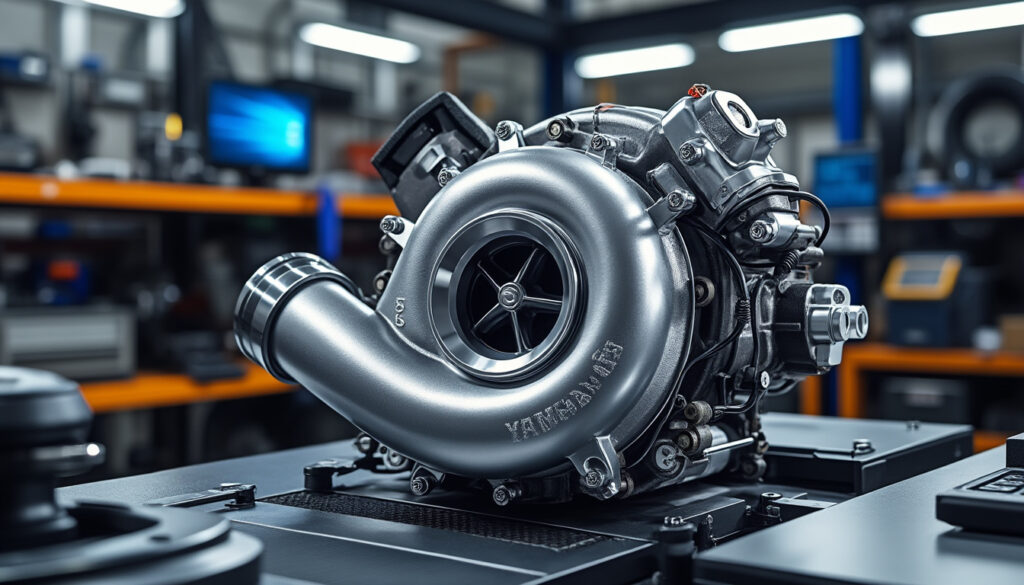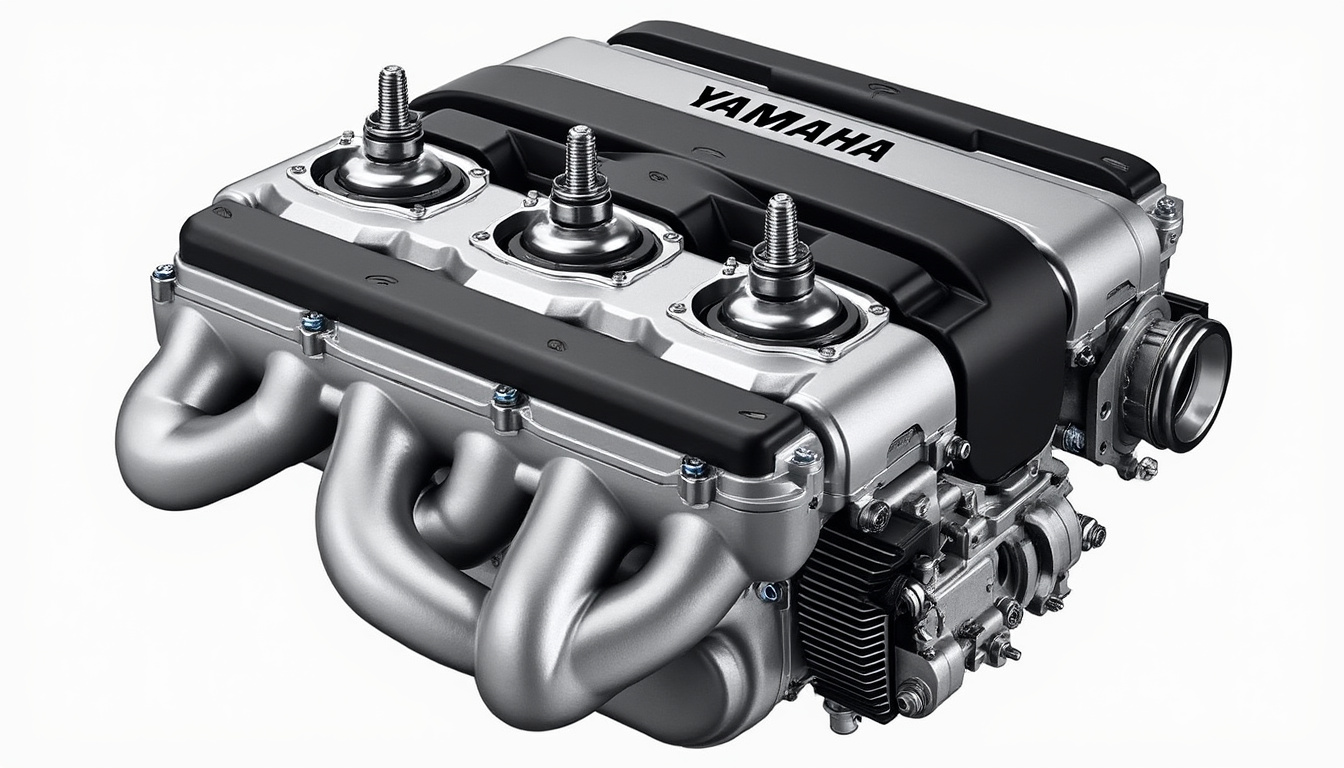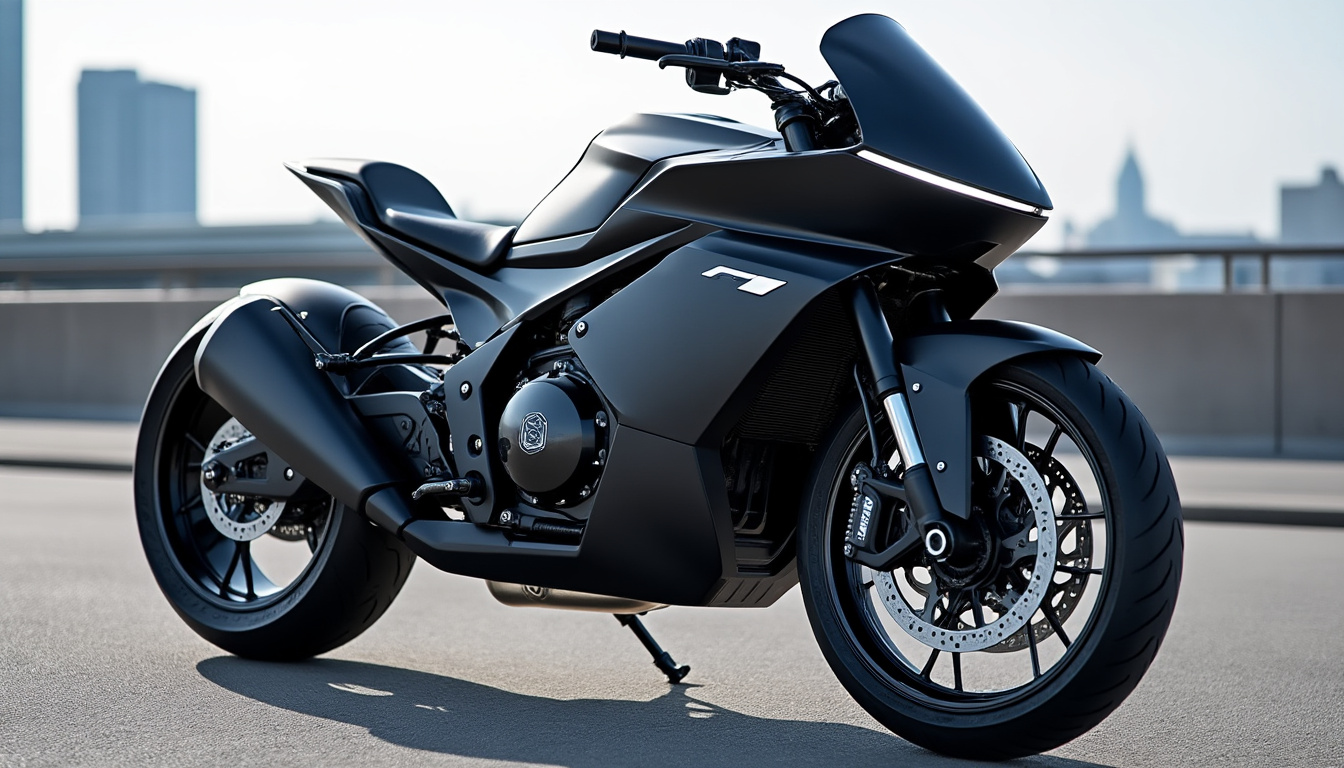a new electric turbo to boost Yamaha's three-cylinder engines

For several years, innovation in the field of automotive and motorcycle engines has taken a significant turn, particularly with the emergence of turbocharging technologies. Yamaha, the famous Japanese brand, seems ready to make a big move in the market by presenting a new three-cylinder engine equipped with a electric turbo. Inspired by the advances of its competitors, particularly Honda, which recently unveiled a revolutionary engine at the EICMA show in Milan, Yamaha aims to combine performance and energy efficiency in its new models. The integration of an electric turbo promises to reinvent the driving experience, blending power and environmental respect. This article examines the implications of this advanced technology in the motorcycle sector, relying on concrete examples from Yamaha and Honda.
Three-Cylinder Engines: A Strategic Choice for Yamaha
The three-cylinder engine offers several advantages, including better compactness and reduced weight compared to four or five-cylinder engines. This choice aligns with the current trend known as downsizing, where manufacturers seek to maximize power while minimizing volume and weight. Indeed, this principle allows for increased energy efficiency while meeting increasingly stringent environmental standards. Three-cylinder engines are therefore establishing themselves as an ideal solution for sustainable mobility, particularly in the motorcycle segment where lightness is paramount.
Yamaha has added its personal touch to this engine type by offering blocks perfectly suited to their motorcycle models. These engines are often associated with mechanical innovation that not only improves performance but also reduces fuel consumption and emissions. This is particularly relevant in the context of 2025, where the pressure to diminish the environmental impact of vehicles is stronger than ever. Here are some key features of Yamaha's three-cylinder engines:
- Compactness: Allows for easy integration into narrow frames.
- Lightweight: Reduces the overall weight of the motorcycle, enhancing agility.
- Low-RPM Torque: Provides immediate power, ideal for urban riding.
Yamaha's three-cylinder engines are thus benefiting from growing exposure in the market, particularly during competitions and motorcycle shows, where performances are highlighted. The presentation of the CP3 model demonstrated their ability to combine power and efficiency, thereby attracting the attention of motorcycle enthusiasts as well as industry professionals.

In terms of performance, Yamaha's three-cylinder engines often outperform their competitors due to their unique architecture. By integrating advanced technologies such as the electric turbo, Yamaha seems poised to raise the bar even higher. The engine's ability to produce significant torque from low RPMs constitutes a considerable advantage for riders seeking immediate response, especially in urban settings or during overtaking maneuvers on the highway.
The Innovation of the Electric Turbo: An Undeniable Asset
The electric turbo, also known as e-turbo, represents a major technological advancement in the field of turbocharging. Unlike traditional turbos, which rely on exhaust gases to operate, the electric turbo is powered by an electric motor. This means it can provide instant power, thus eliminating the phenomenon of turbo lag, which is often a drawback of conventional turbocharging systems. This innovation not only improves engine responsiveness but also optimizes fuel economy and reduces harmful emissions.
As part of mechanical innovation, Yamaha seeks to integrate this technology into its three-cylinder engine. The recently filed patent indicates that the brand plans to use an electric turbo that could be activated on demand by the rider. This resembles the system implemented by Honda, which introduced a similar engine with an electric compressor capable of managing air pressure independently of engine speed. This idea of on-demand activation could offer riders a personalized driving experience tailored to their preferences and traffic conditions.
The benefits of the electric turbo are numerous:
- Reduction of turbo lag: providing immediate response.
- Fuel economy: thanks to better management of air/fuel mixtures.
- Reduced emissions: contributing to a cleaner environment.
The electric turbo's ability to integrate with systems using renewable energies or hybrid solutions also opens new perspectives in sustainable mobility. This could thus transform the landscape of sports and utility motorcycles toward more environmentally friendly models.
Impact on Yamaha Motorcycle Performance
Engines fitted with electric turbos promise to significantly enhance the performance of Yamaha motorcycles. Indeed, by strengthening the power-to-weight ratio, riders will benefit from better acceleration and increased top speed. With this integration, Yamaha aims to capture both speed enthusiasts and those concerned about fuel consumption.
The genetic performance of the engines, coupled with the introduction of an electric turbo, embodies the promise of dynamic and enjoyable riding while remaining economically viable. By taking a closer look at these performance gains, it is useful to consider concrete cases. Let's take the example of a motorcycle equipped with the CP3 engine currently in development. This engine, combined with an electric turbo, could offer:
| Feature | Current Value | Expected Value with Electric Turbo |
|---|---|---|
| Maximum Power | 115 hp | 135 hp |
| Maximum Torque | 87 Nm | 100 Nm |
| Fuel Consumption | 5.5 L/100 km | 4.8 L/100 km |
| CO2 Emissions | 130 g/km | 100 g/km |
This table highlights the anticipated improvements that accompany the integration of an electric turbo. Indeed, an increase in power and torque, coupled with a reduction in consumption, represents a real advantage for the brand in a booming market. This also aligns with current ecological requirements, which should appeal to a customer base increasingly concerned about the environment.
Comparison with Competitors: Racing Toward the Future
With the emergence of new players in the motorcycle sector, Yamaha faces increased competition. Brands like Kawasaki, Suzuki, and Honda are also investing in advanced technologies to attract riders seeking performance and innovation.
Honda, with its three-cylinder engine featuring an electric compressor, is an excellent example of the direction the market is taking. When considering the elements that differentiate these offerings, several factors come into play:
- Technological Innovation: Honda models leverage advanced compression systems.
- Value for Money: Yamaha must offer competitive models without sacrificing quality.
- Design and Ergonomics: The aesthetics of motorcycles and their riding comfort are essential for attracting customers.
A comparative table will quickly assess Yamaha's position against its competitors in various areas:
| Brand | Engine Type | Performance (hp) | Turbocharging Technology |
|---|---|---|---|
| Yamaha | 3 Cylinders | 135 hp (expected) | Electric Turbo |
| Honda | V3 75° | 130 hp | Electric Compressor |
| Kawasaki | 4 Cylinders | 142 hp | Conventional Turbo |
| Suzuki | 3 Cylinders | 120 hp | None |
By choosing advanced technology like the electric turbo, Yamaha positions itself not only to compete with its rivals but also to attract new customers eager to combine performance and sustainability. The ability to innovate and adapt to the changing needs of riders is crucial for maintaining the brand's image and market share.

As regulations tighten and consumers become more sensitive to the environmental impact of their vehicle choices, the electric turbo at Yamaha could play a crucial role in the future of mobility. Brands that can effectively integrate these technologies will not only gain popularity but also recognition. This competition in the field of mechanical innovation highlights the potential for collaboration between creativity, advanced technology, and commitment to the environment.
Source: www.caradisiac.com
Leave a Reply



Articles relatifs